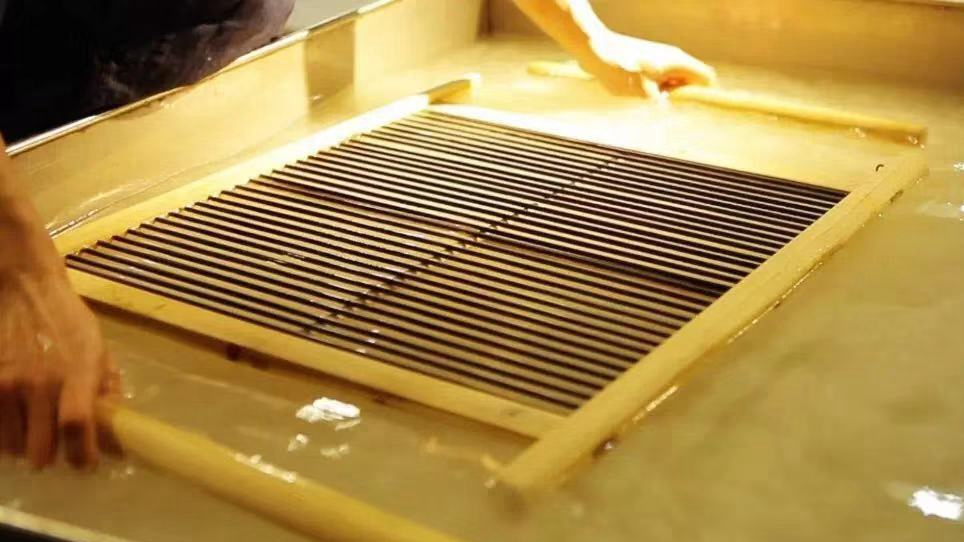
Over 70 processes are required to complete the production of a single piece of paper. (Photo: CGTN)
Imagine paper that will last 1,000 years. Well, it's not high-tech but the product of an ancient technique that is being showcased at Xi Tang in the northeast of downtown Beijing. China Han Paper Research and Development Center has brought together over 50 artists and experts on traditional papermaking from around the country.
At first look, it’s no different from an art show of Chinese calligraphy and ink paintings. But there’s something quite unusual going on here. Blank pieces of paper, dried herbs, seashells, bubble stones, brushes, spray cans and even a knife.
As a matter of fact, this is all about paper, Han Paper to be exact. Han refers to an ancient Chinese dynasty and Han Paper to an invention dating back 2,000 years.
Gong Bin, founder and director of the China Han Paper Research and Development Center, and his team have revived the ancient papermaking methods after ten years of hard work.
Gong said, "Hard work is not the right term, I think. The point is to believe in the words 'I do'. It is very hard to master the ancient papermaking techniques so it will show us how to respect, how to worship and how to value the wisdom of our ancestors who made paper with those methods."
Han paper is mostly made from Goushu, a kind of tree from the mulberry family. From selecting tree skin to finally making a piece of paper, a total of over 70 processes are required to complete the production of one single piece of paper.
The ancient artifacts unearthed in Dunhuang grottos in the northwest Gansu Province date back to Tang Dynasty, or about 1,500 years ago. If repaired with today's Han paper, they're expected to last for another millennium.
Du Weisheng is the man who repaired these relics. After 45 years of working as a restoration expert in the National Library of China, Du said the effort Gong Bin made in reviving ancient papermaking techniques is really difficult and very significant.
"There is no written record. All of it is based on skills handed down by older generations. Each type of paper is made by a unique technique. Once a certain kind of paper was no longer popular, it would disappear soon and so would the technique used to make it. That's why I think Gong Bin's work is very meaningful," Du said.
Gong Bin is thinking big and far. "I will devote my whole life to papermaking research," he said, "Starting 1,500 years ago, the Chinese papermaking technique was introduced from the East to the West. I wish I could thread the same path. We hope to establish good relationships with paper-related institutions, museums and artists, in Europe in particular. You know the Renaissance created a lot of great artists. What kind of paper did they use? We can also restore the type of paper that Da Vinci, Dürer and Michelangelo used. "
For Gong Bin, making a piece of paper is not only a career of arts, but the paper itself is also a work of art. It does not care about governments, religions, genders or skin colors. It only carries the history of mankind.


